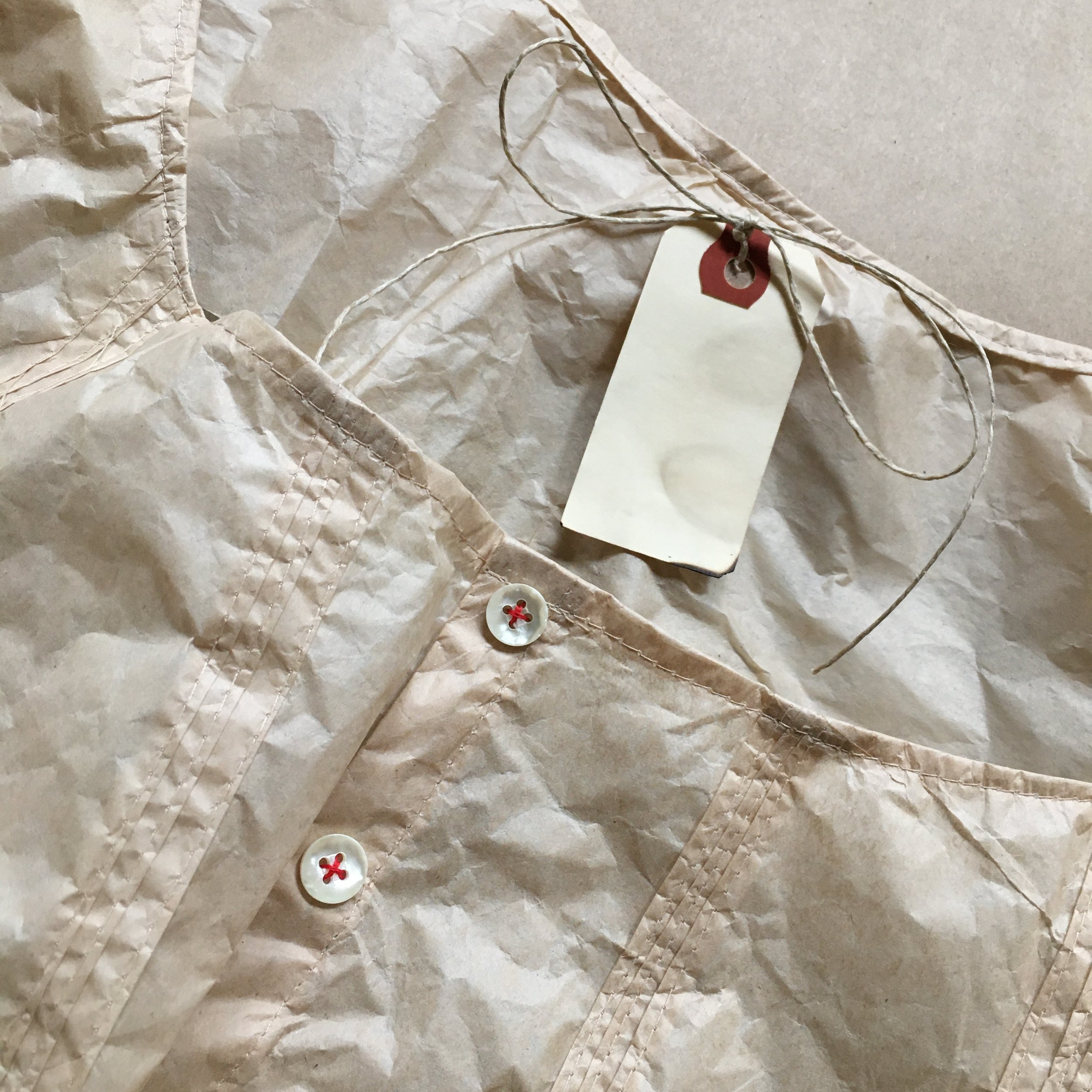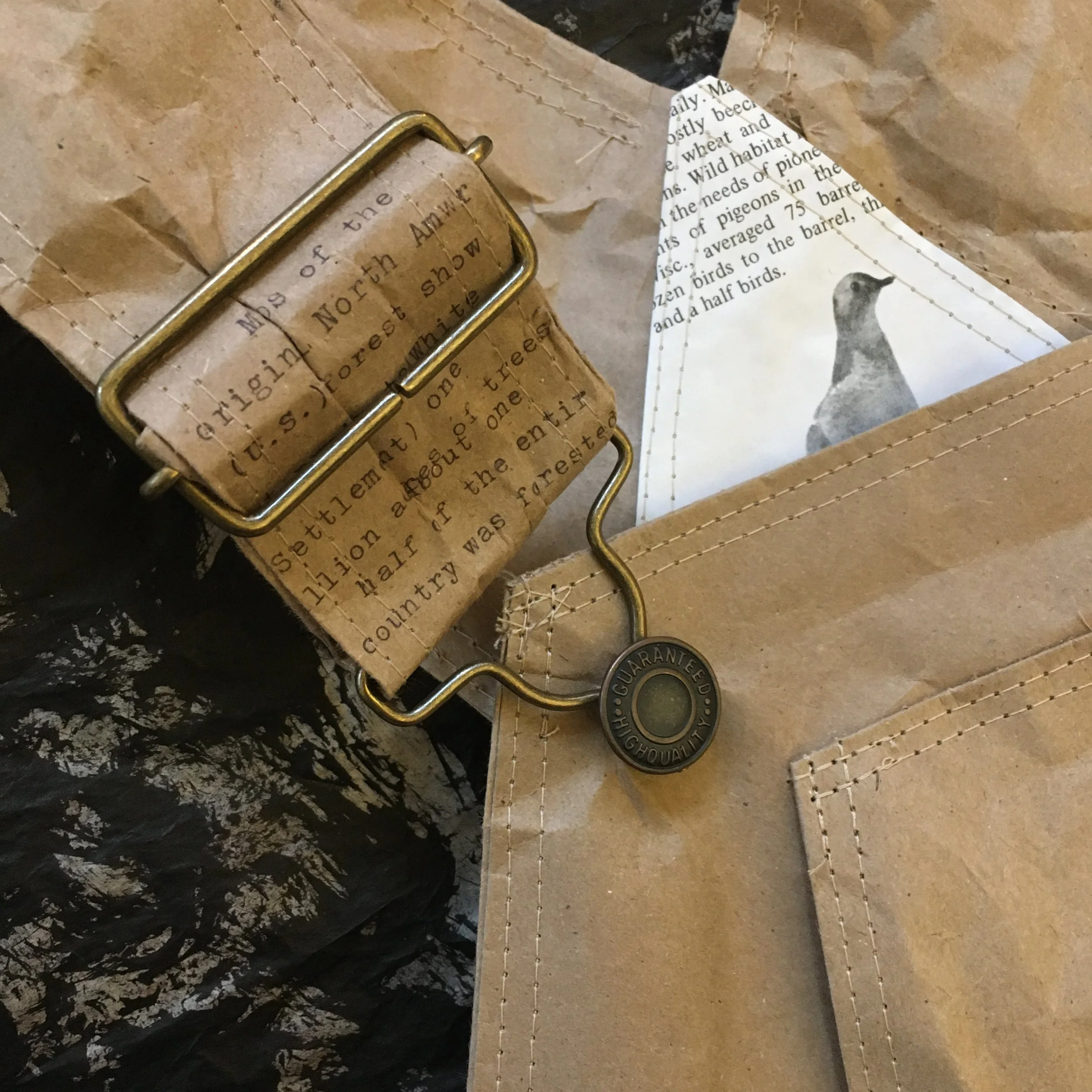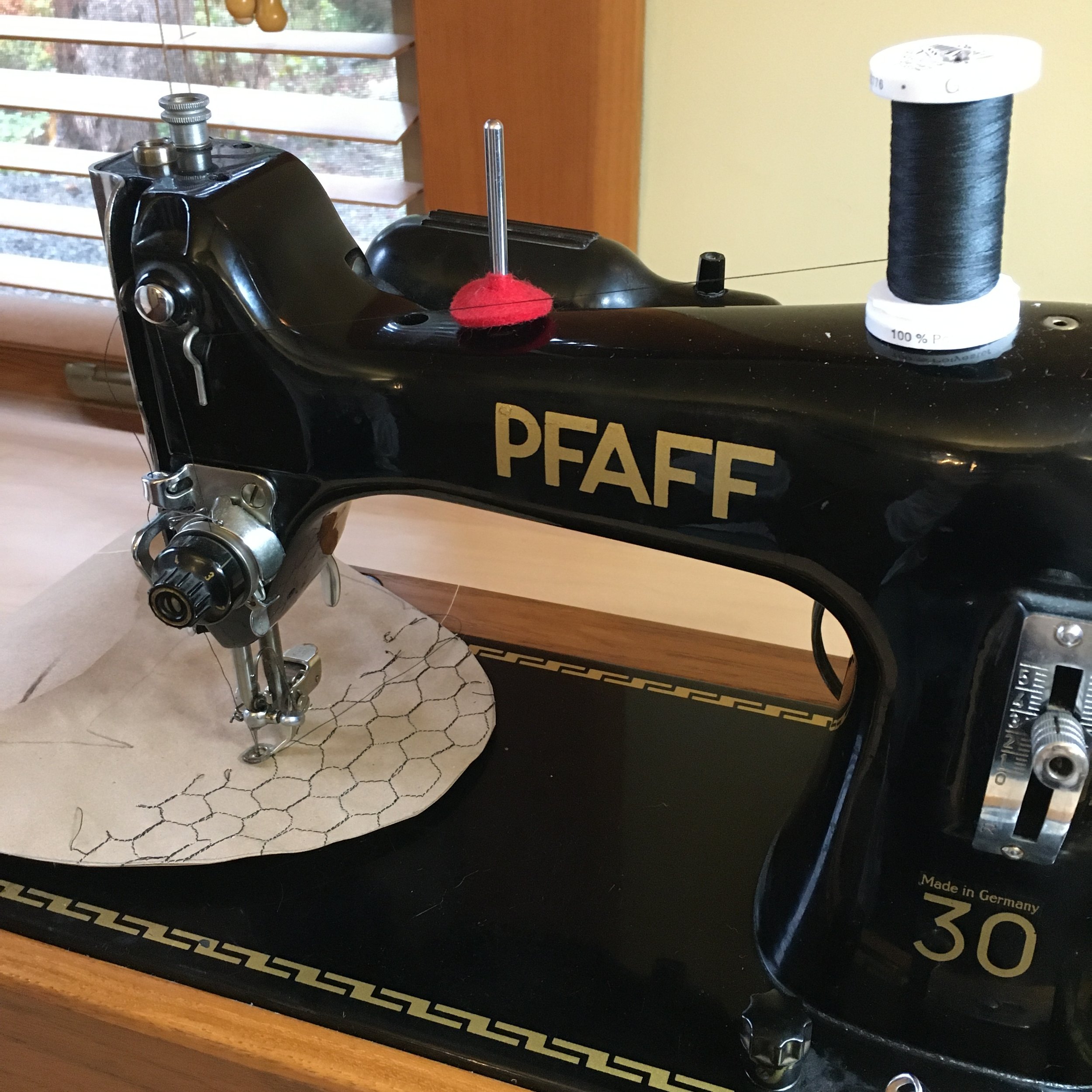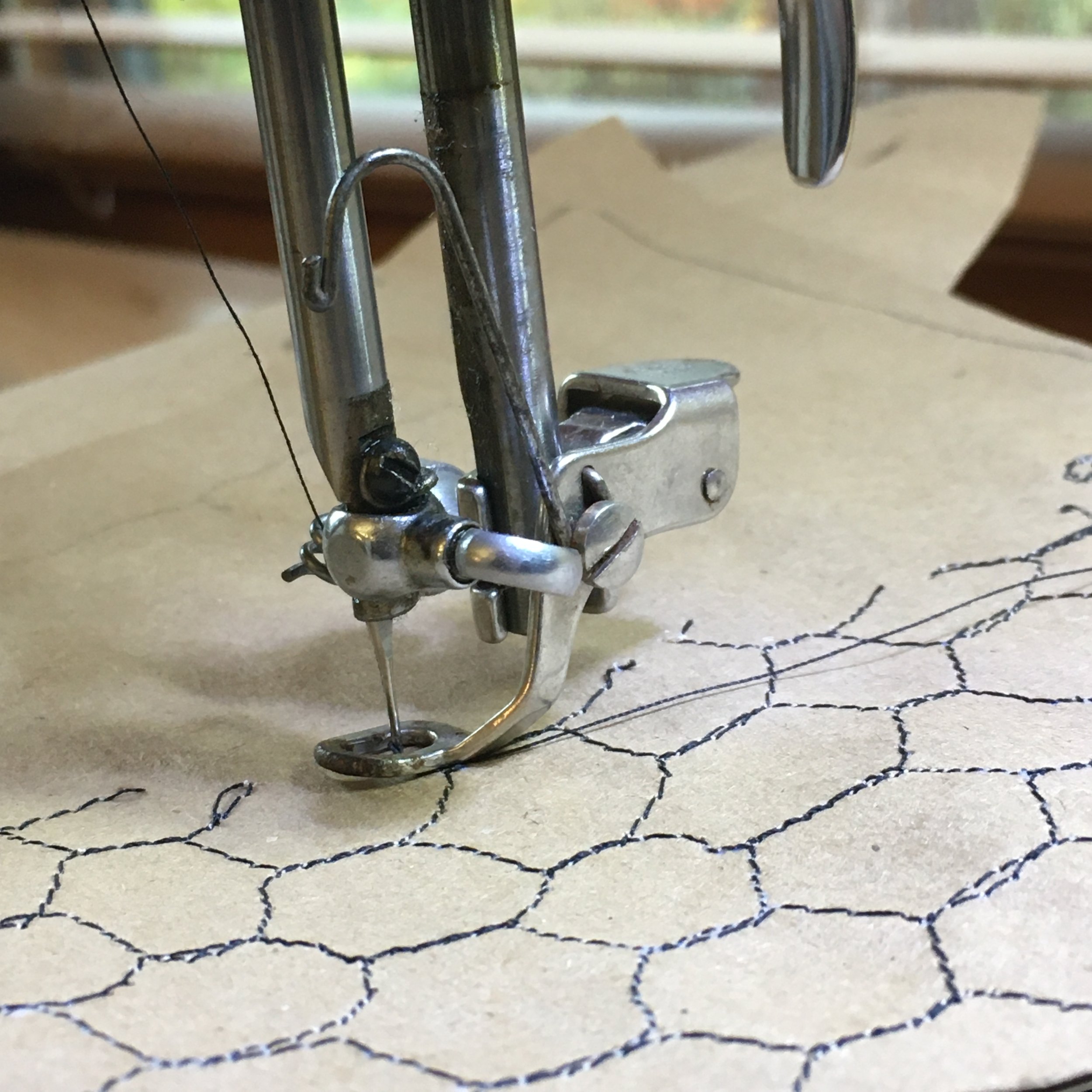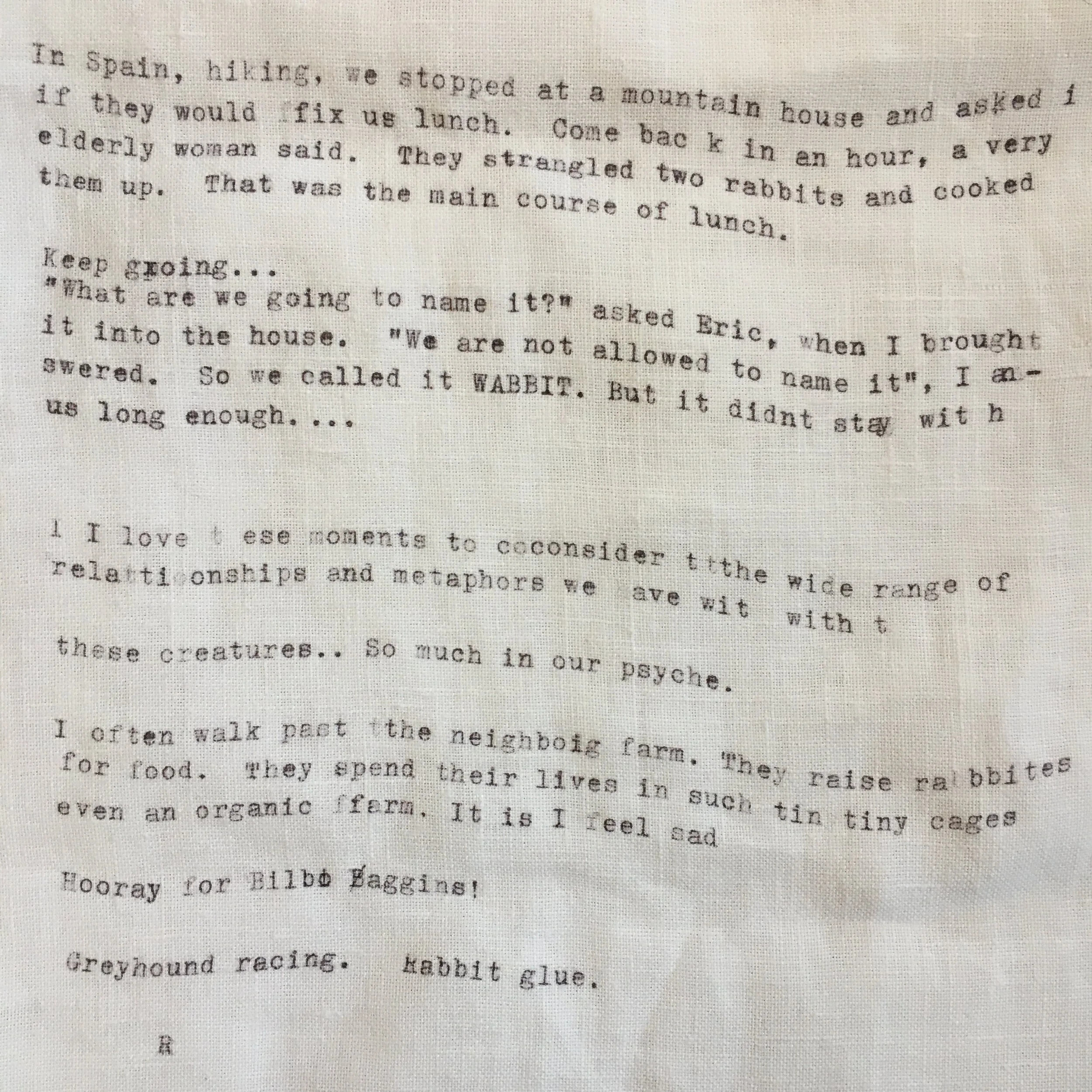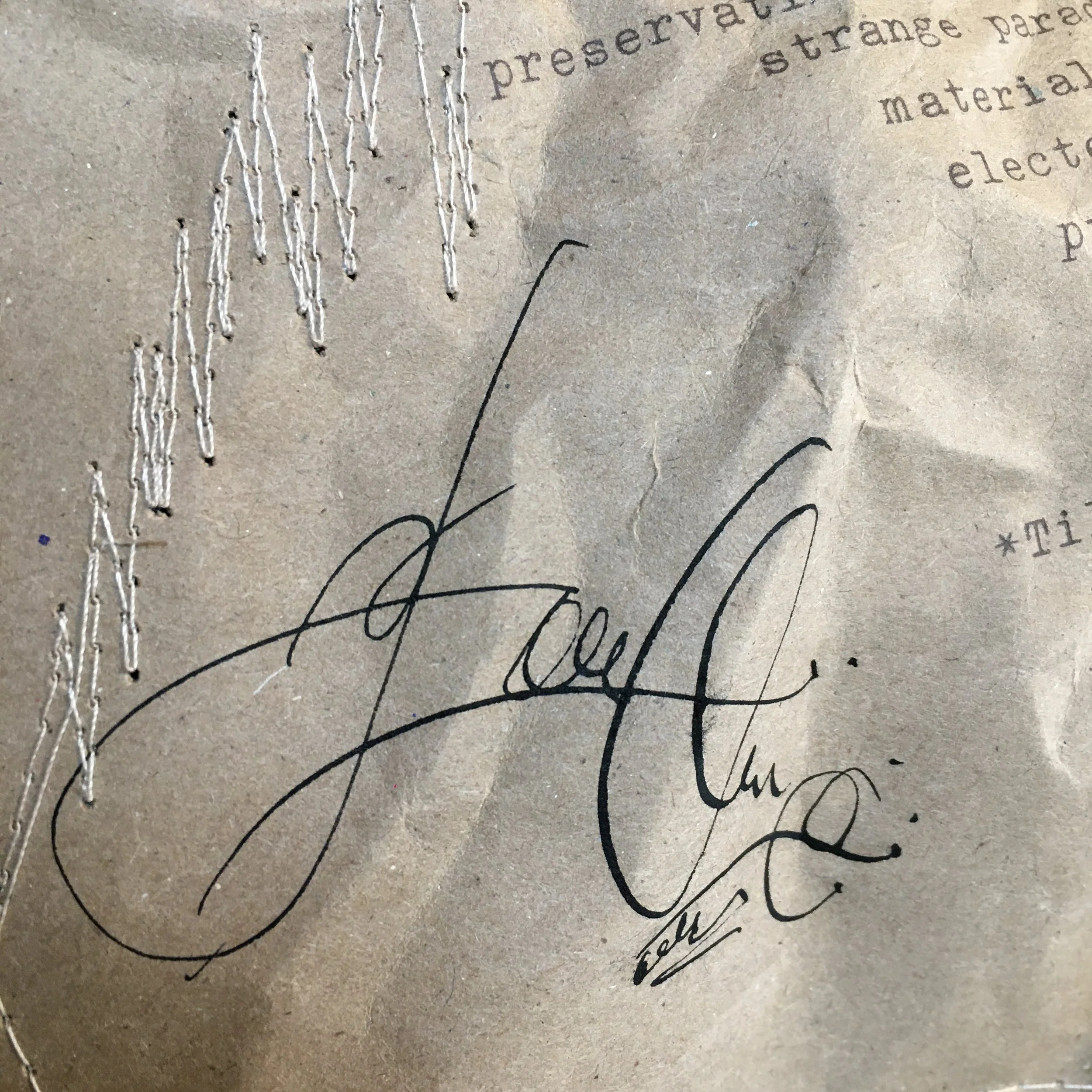Sewing Machines, Typewriters and Steel Nib Pens
There’s no doubt we are living in an era of human-fueled environmental destruction. While the evidence surrounds and overwhelms us, I have been indulging a look backwards with one question in mind: How did we get here?
While many answers compete, my mind goes straight to the Industrial Era, that time of great societal upheaval from about 1760 to 1914 when people in Europe and the United States traded subsistence farming for factory labor. That’s when Western culture developed the tools, technology and social structures necessary for the mass production and mass consumption we see today.
With this in mind, I’ve been creating brown kraft paper and tissue paper clothing using sewing patterns and styles from the Industrial Era. (Kraft paper is Industrial Era invention.) For surface design on the paper, I use technology from that time as well: the sewing machine, the typewriter and the steel nib pen. I like to weave this kind of authenticity (without going totally purist about it) into my art, plus these tools are great fun.
An Edwardian era camisole I sewed in unbleached tissue paper.
Detail of a pair of overalls I made with brown kraft paper. The tag is from a 1960s conservation text book describing the passenger pigeons hunt to extinction in the late 1800s. The last wild bird was shot in 1901.
I have three beautiful vintage sewing machines: a Pfaff 30 (I bought for $200 at an antique store), a Brother Flairmatic (I got for $20 off the internet) and a Singer Featherweight (my partner’s mother’s machine given to me on permanent loan.)
With its rhythmic chugging and smell of warm machine oil, the Praff 30 is my current favorite. Using a needle designed for sewing leather, I stitch directly into the paper creating lines and designs. It’s that simple. For straight designs, I use the normal presser foot; for complicated freehand designs, I drop the feed dogs and install the “sprung” darning foot attachment. It’s like drawing with thread. Try it!
My 1939 Pfaff sewing machine, made in Germany. It’s not an Industrial Era relic but the technology is.
The “sprung” darning foot attachment allows me to stitch this chicken wire design onto paper. Chicken wire was invented in 1844 by British ironmonger Charles Barnard. He developed it for his father, a farmer, the manufacturing process being based on cloth-weaving machines.
I also have two workhorse typewriters. Typewriters say “efficient” and “modern” to me in a way that was prized in that era. Because I’m brutal with the typewriters, jamming multiple layers of thick paper and fabric through the platen and hammering down keys with abandon, the typewriters are nothing special: just a couple from the 1970s I picked up for free. The keys are now splattered with ink and glue. For visual inspiration, I keep a broken Underwood No. 5 from the 1920s.
You can type directly onto fabric. Here I’ve rolled linen into a 1970s Sears Chevron typewriter. The first commercial typewriter model was manufactured in 1873 and was mounted on a sewing machine stand.
Typewriting on linen from my exhibit, A Rabbit Named __________.
Steel nib dip pens for calligraphy must have been a revelation when they replaced feather quills in the early 1800s. Scritching away brings to my mind Bob Cratchit from Charles Dickens’ Industrial Era novella (and cultural critique), A Christmas Carol. It took me a year of practice to develop a competent hand with the steel nib pen. I empathize with poor Bob writing with cold hands and dim light, a victim of Scrooge’s miserly ways.
You can see a bit of my practice calligraphy in the upper left hand corner. My style became looser and more expressive with practice.
Combining these three tools, I aim to conjure the potency of the Industrial Era with its hopeful but misguided promises for the modernized, mechanized society we live in today. Is this what they imagined?
Boots I made with kraft paper and parcel string. Sewn together on my Pfaff 30 sewing machine, you can see the typewriter and steel nib pen used for surface design. “One billion acres” is the amount of forested land in the continental United States prior to the arrival of Europeans. A fraction of that remains today.

